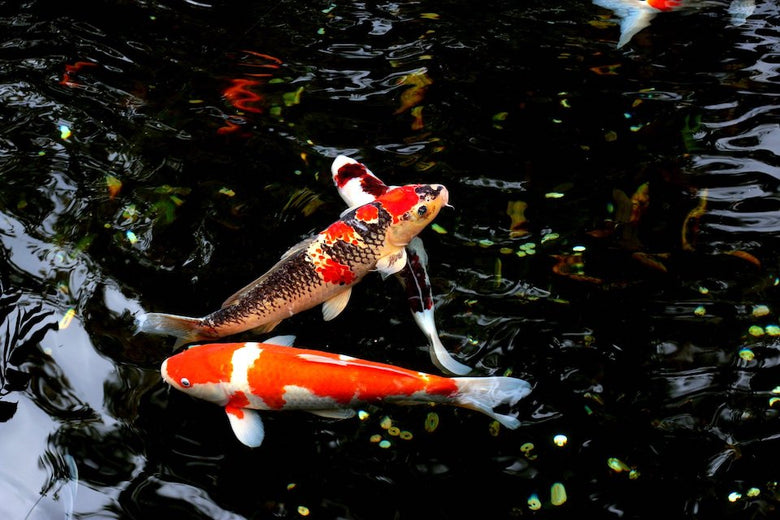
Understanding the Nitrogen Cycle
Maintaining a healthy aquarium or pond starts with a fundamental understanding of the Nitrogen Cycle. This process is critical whether you're keeping Koi Carp, general pond fish, tropical fish, or marine fish. Because fish live and breathe in the water, maintaining balanced, high-quality water conditions is essential for their health and longevity. So, how exactly does the Nitrogen Cycle work?
The Challenge of a New Aquarium or Pond
All new aquariums and ponds experience what’s commonly known as "new aquarium/pond syndrome." This refers to a system that lacks the beneficial bacteria needed to process fish waste effectively.
These bacteria are comparable to the healthy gut bacteria in humans, which help us digest food and absorb nutrients. Without them, waste begins to accumulate, and toxic compounds quickly build up in the water.
The Role of Nitrifying Bacteria
The Nitrogen Cycle is driven by a group of beneficial microbes called nitrifying bacteria. These bacteria establish themselves in the biological filter media of your aquarium or pond. It typically takes about 8 weeks for them to multiply and become effective at processing fish waste.
This is known as biological filtration. During this early stage, water conditions are unstable, and fish losses can occur due to invisible, harmful toxins building up in the water.
Continue reading to learn exactly how the Nitrogen Cycle works—and how to manage it effectively for a healthy aquatic environment.
Ammonia: The First Stage of the Cycle
When the first fish are introduced and begin eating, they produce waste in the form of ammonia. This is the first spike you’ll likely notice in your water test results. As ammonia accumulates, it often triggers a bacterial bloom, causing the water to appear cloudy.
The bacteria responsible for breaking down ammonia is called Nitrosomonas. Once established, Nitrosomonas bacteria consume ammonia and convert it into nitrite—another toxic compound.
Nitrite: The Second Stage
As Nitrosomonas begins to work, ammonia levels drop while nitrite levels rise. Like ammonia, nitrite is also harmful to fish. Fortunately, a second type of bacteria, Nitrobacter, becomes active at this stage.
Nitrobacter consumes the nitrite produced by Nitrosomonas and converts it into nitrate, a much less harmful substance for fish.
Nitrate: The Final Stage
While nitrate is significantly less harmful than ammonia or nitrite, high concentrations can still lead to water quality issues over time. The easiest way to manage nitrate levels (in aquariums and smaller ponds) is through regular partial water changes—typically 10% per week.
To maintain optimal water conditions, we recommend routine water testing. At Complete Koi & Aquatics, we test our water daily due to the large number of fish we maintain, but for home aquariums and ponds, testing weekly or fortnightly is sufficient.
Tips for Managing New Aquarium/Pond Syndrome
If you're setting up a new system, here are some practical steps to help speed up the Nitrogen Cycle and protect your fish:
-
Introduce beneficial bacteria early by adding a bacteria-based filter starter to your filter media. For aquariums, we recommend Fluval Cycle, and for ponds, Filter Bugs, both of which we've found to be highly effective in reducing nitrite and ammonia levels during the critical early stages.
-
Start with a small number of hardy fish, and increase the population gradually over several weeks- never adding whilst ammonia or nitrite is present in the water.
-
Feed small amounts initially to limit ammonia production. Increase feeding as your bacterial colonies grow.
-
Conduct regular water tests. You can do this with a home kit or bring a water sample to Complete Koi & Aquatics in a clean container—we'll test it and provide advice.
Support Your Fish from Day One
Don’t let “new tank syndrome” catch you off guard. Start your aquatic journey the right way with expert advice, high-quality products, and ongoing support from Complete Koi & Aquatics.
For any advice on the above, please don't hesitate to contact Complete Koi & Aquatics and check out our other blogs for futher advice and information...
Understanding Your Water Parameters for a Healthy Pond Ecosystem | Understading Your AquariumWater | Can I Use Tap Water In My Aquarium?